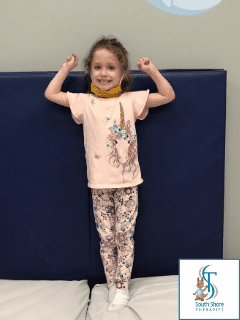05/17/2021
What You Should Know About Pediatric Stroke in Children
Did you know that strokes can happen at any age? That means kids can have strokes too! Check out this article to learn more about pediatric stroke.

I NEVER KNEW KIDS COULD HAVE STROKES…
When someone talks about pediatric stroke and pediatric brain injury, the common response is “I didn’t know kids could have strokes” or “I only thought adults had strokes”. But in fact, it is more common than many realize. In fact, current research suggests that pediatric stroke happens in one in every 4,000 live births and an additional 2,000 children per year.
For children a stroke can happen before birth, during birth, or after birth. A child is at the highest risk in the first year of life. Learn more about the signs of stroke HERE:
IS PEDIATRIC STROKE THE SAME AS ADULT STROKE?
It is important to note that pediatric stroke is NOT the same as adult stroke. A child's brain is still growing and developing as opposed to an adults fully developed brain.
Good news, neuroplasticity is strong within a pediatric brain. Neuroplasticity is defined as: the ability of the brain to form and reorganize synaptic connections, especially in response to learning or experience or following injury. This means that the brain has the ability to heal, build new pathways, regain skills, and learn new skills, allowing one to live to their optimal potential. Learn more about neuroplasticity HERE.
However, it is important to remember that early diagnosis and proper intervention can help promote neuroplasticity to allow children to survive and thrive.
WHAT ARE LONG TERM DEFICITS OF PEDIATRIC STROKE?
Unfortunately, a child is often faced co-morbidities and long-term deficits secondary to stroke. According to the American Heart and Stroke Association,>60% of children who survive a stroke will have permanent neurological damage. Children who have suffered a stroke may have one or more of these co-morbidities:
- Hemiparesis/hemiplegia
- Epilepsy/seizures
- Speech and language deficits
- Cognitive difference/learning disabilities
- Difficulties with attention
- Sensory differences/sensory processing difficulties
- Visual or hearing impairments
- Behavioral or emotional changes
SO WHAT DO WE DO?
We know that the child’s brain has a high aptitude for change as a result of neuroplasticity, so it is important to get proper intervention as early as possible. Working with a strong team to provide both medical and therapeutic intervention will help support pediactric stroke survivors to reach their optimal potential.
It is important to remember that these warriors are still kids – they want to play with their peers, go to school and participate – so it is our job, as pediatric therapists, to help promote functional skills to allow for participation in meaningful activities. Occupational therapy, physical therapy and speech therapy work together to help promote growth and development in functional motor/cognitive and sensory skills in order to help a stroke warrior live the best quality of life available to them.
Where Do I learn More?
Pediatric stroke looks different for every child and no one journey is the same. If you want to learn more about pediatric stroke, these resources are a great place to start:
- American Stroke Association:
- Children's Hemiplegia and Stroke Association:
- International Alliance for Pediatric Stroke:
- A Family Guide to Pediatric Stroke:
- Infant and Child Pediatric Stroke Fact Sheet:
Through education, awareness, and research we can help support pediatric stroke warriors so they can live life to the fullest. Be brave, be fierce, be mighty.